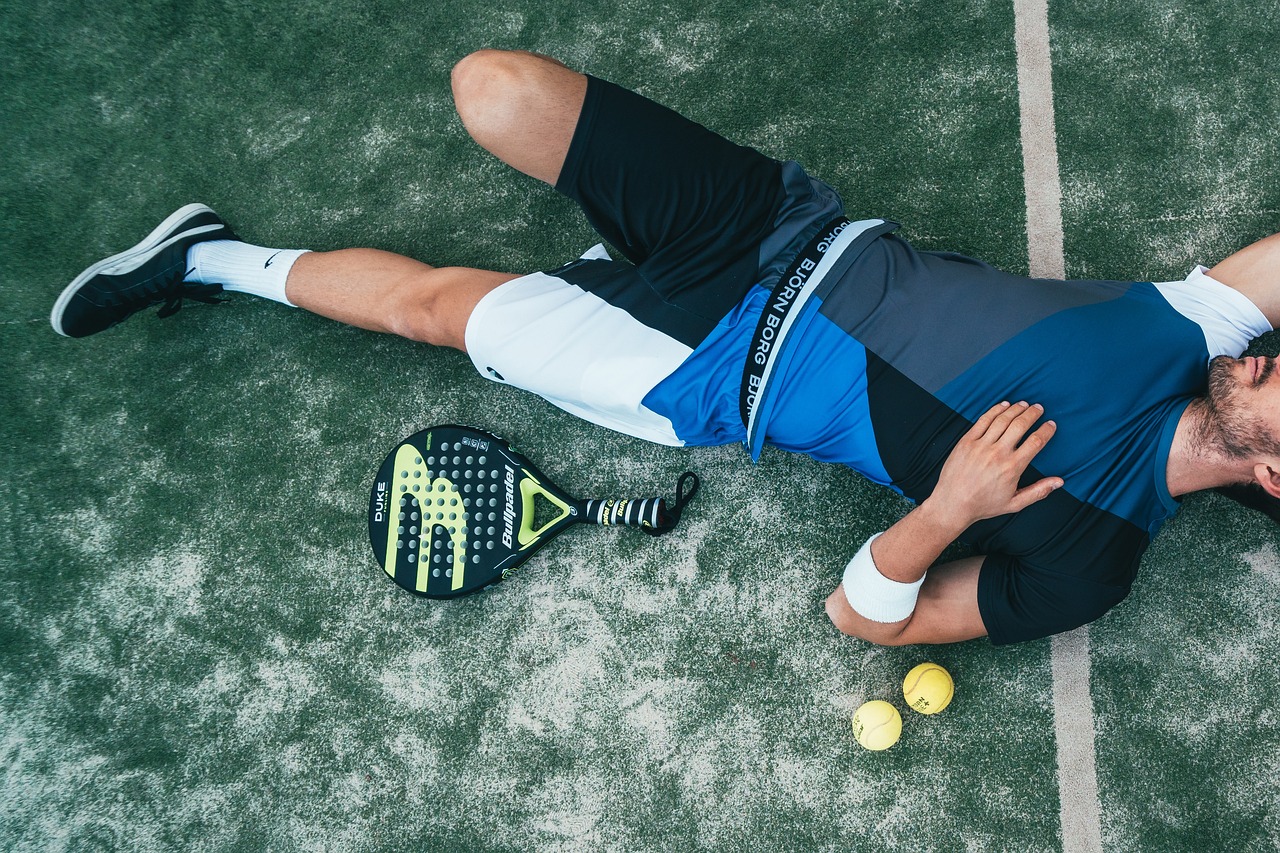
Adductor training – Preventing Injuries
Hip Exercises to help Build Adductor Strength and Prevent Injury
The adductors provide important support for your hips and lower body and contribute to hip strength and mobility. Incorporating exercises which target these muscles can help to improve mobility and decrease your risk of injury.
Having strong hips is an integral part of injury prevention, sports performance, as well as maintaining mobility as you age.
With respect to strength training, the adductors are often overlooked because they can be difficult to train properly
In this blog, we’ll provide details about the function of the adductors, where they’re located, some exercises to strengthen them, and provide a few tips to consider when training.
What are the adductors?
Your inner thighs contain a crucial set of muscles called adductors, which help to draw your legs closer to your body’s center.
Adduction is the movement of drawing your legs inward; this phrase should not be confused with abduction, which is the exact opposite.
The adductors extend from multiple sites on the femur backs to multiple points on the public bone. They are therefore frequently referred to as the “groin muscles.”
The adductors, which are the muscles in your inside thighs, will contract as you squeeze your legs together.
Why are they important? What do they do?
The adductors play a vital part in both daily living and sporting activity because they are among the largest muscles in the body, along with the other leg muscles.
Their main job is to stabilize the lower body when doing routine tasks like squatting, walking, and climbing stairs. They are particularly crucial when working out.
This muscle group is very important to athletes because it facilitates explosive motions like sprinting, jumping, and side-to-side rapid motion.
They also offer hip joint mobility, which is crucial for preventing injuries.
You may significantly lower your chance of injury by training your adductors on a regular basis and helping them get ready for the demands of physical activity.
7 exercises to work your adductors
For example, the adductors provide secondary support during squats, deadlifts, box jumps, and sled pushes, among other popular workouts.
Even though you can work your adductors somewhat just by doing these exercises, you might want to focus on them especially to build strength and lower your chance of injury.
If you’re wanting to target your inner thigh muscles during your workout regimen, here are 7 of the greatest adductor exercises, ranging in difficulty.
- Seated banded adduction
Because it requires less stability, this sitting variant of the standing banded adduction is a little easier.
For those just starting out who want to work on their adductors, this variant is a great choice.
How to perform:
- Start by wrapping a resistance band around a solid anchor such as a power rack or another piece of equipment that is attached to the floor.
- Sit on a weight bench with either side of your body facing the anchor point and band.
- Put your inner foot through the band, positioning it just below your knee.
- Allow the band to pull your leg toward the anchor point while resisting the movement.
- Bring your leg back toward the midline of your body by contracting your adductors.
- Repeat with each leg until you have reached the desired number of sets and reps. Aim for 2–3 sets of 10–12 reps.
- Wide stance squat
With good reason, the squat is frequently referred to as the “king” of leg workouts since it promotes the recruitment of muscles throughout the entire leg.
The wide stance squat, commonly referred to as a sumo squat, is one of the many squat variations that works especially well to target the inner thigh muscles.
This exercise can be done with your body weight alone or with a number of weighted tools, like a barbell, kettlebell, dumbbell, or sandbag.
For the purpose of this blog, we’ll review the wide stance squat performed without any external resistance.
How to perform:
- Set your feet a bit wider than shoulder width, turning your toes slightly outward.
- Shift your weight back and slowly lower your hips until your thighs are parallel to the floor.
- In a controlled motion, return to the starting position by pushing through the floor, feeling the muscles of your glutes and legs, including your adductors, contract.
- Repeat for the desired number of sets and reps. Aim for 2–3 sets of 10–12 reps.
- Adductor machine
Many individuals may associate isolating the adductors with the traditional adductor machine that is present in gyms all around the world.
While the inner thigh can be effectively trained with this machine, there are other movements that can also be beneficial.
This exercise is excellent for beginners since you may change the breadth of the pads and the amount of weight.
It’s best to begin very lightly in order to gain a sense of the workout and prevent injury.
How to perform:
- Start by sitting on the machine with the pads positioned between your legs as wide as is comfortable, and select your desired resistance.
- In a controlled manner, squeeze your thighs together just until the pads touch, feeling the muscles contract.
- Slowly reverse the movement, returning your thighs to the starting position.
Repeat for the desired number of sets and reps. If just starting out, try 2–3 sets of 10 reps.
- Standing banded adduction
Resistance bands are a fantastic tool for effectively training the adductors from multiple angles when the goal is to isolate them.
It is quite simple to change the degree of difficulty because bands are available in a range of resistance levels and lengths.
How to perform:
- Start by wrapping a resistance band around a solid anchor such as a power rack or another piece of equipment that is attached to the floor.
- Standing with either side of your body facing the anchor point, wrap the band around your inner (working) foot.
- Adjust the tension of the resistance band by standing farther away from the anchor point or wrapping the band more tightly.
- Allow the band to pull your leg to the side while resisting the movement.
- To start the exercise, stand tall and bring your banded leg toward the center of your body, feeling a good contraction in your adductors.
- Slowly release your leg back to the side, with control.
- Switch legs and repeat for the desired number of sets and reps. Aim for 2–3 sets of 10–12 reps.
- Side-lying adduction
This is a fantastic exercise for beginners that can be done without any equipment.
How to perform:
- Lie on your side on a mat. Ensure that your spine is neutral and your hips are stacked. Keep your bottom arm folded under your head and your top hand on the floor in front of your stomach.
- Bend your top knee so it points toward the ceiling and place the foot flat on the floor in front of your bottom leg.
- Keeping your bottom leg long and foot flexed, lift your bottom leg off the floor, contracting your adductors.
- Allow your leg to slowly return to the floor in a controlled motion.
- Repeat the movement with your other leg for the desired number of sets and reps. Aim for 10–12 reps and 2–3 sets.
- Lateral lunge
For any skill level, the lateral lunge is an excellent option. If you wish to add extra difficulty, you can change it by adding dumbbells.
How to perform:
- Stand with your feet hip-distance apart.
- Step out with your right leg and begin sending your hips back as you bend your right knee. You can reach your arms forward for counterbalance if you like. During the descent, your knee should not move more than about 2 inches beyond your toes, and you should keep your knee aligned between your second and third toe. The toe of the foot that steps out may turn outward slightly.
- Push off with your right leg to return to a standing position.
- Repeat on your left leg to complete 1 rep.
- Complete 2–3 sets of 10–12 reps on each leg.
- Copenhagen hip adduction
More experienced athletes can choose to perform this exercise. By using your body weight, it isolates your adductors completely.
Although it is frequently used as an accessory exercise by strength athletes, athletes from other sports can also benefit from it, as can people who just want to strengthen their inner thighs.
This exercise puts your adductors in a little compromised posture, so be extra careful with it. If done incorrectly, it can increase your chance of injury.
How to perform:
- Start in a side plank position with one elbow on the floor or a pad and your legs perpendicular to a weight bench or similar piece of equipment.
- Place your top leg on the bench with your knee slightly bent, keeping your bottom leg straight underneath the bench. The higher you rest on your top leg on the bench, the more stability (and less risk of injury to the groin) you will have. If you rest only your ankle on the bench, this exercise will be extremely challenging.
- Contract the adductors of your top leg to hold your body weight, and slowly raise your bottom leg until it touches the underside of the bench.
- Gradually lower your body back to the starting position.
- Once you’ve completed the desired reps for that leg, flip over and work the adductors of the other leg.
- Repeat for the desired number of sets for each leg. Aim for 2–3 sets of 10–12 reps.
Tips for adductor exercises
To optimize the effectiveness of the exercise and lower the danger of injury, there are a few key considerations to make when training the adductors.
Gradually increase range of motion
To lower your chance of injury, it’s better to start with a limited range of motion when you first begin adduction exercise.
As you get stronger and more experienced, you can slowly increase the range of motion and resistance to put more stress on your muscles.
By doing this, you can train without injuring your adductor muscle.
Stretch and warm up
Warming up before exercise is generally a good idea because it can increase your body temperature and get blood circulating to your muscles, both of which can assist prevent injury.
To get their blood flowing, many people start with 5 to 10 minutes of low-intensity exercise like treadmill or elliptical use. This can be followed by stretching.
Stretching before exercise can help preserve muscle strength, and evidence suggests that dynamic (movement-based) stretches may be better than static (non-movement) stretches.
On the other side, if static stretches are done before strength training, they can make muscles less strong.
Some examples of appropriate dynamic stretches to warm up the adductors are:
- front-to-back leg swings
- side-to-side leg swings
- jumping jacks
- bodyweight jump squats
Feel the contraction
Going through the motions during a workout is one thing, but you’ll usually get better results if you concentrate on contracting the working muscle.
According to some studies, the mind-muscle connection—also referred to as concentrating on the contracting muscle—can enhance muscular activation, which may lead to improved training outcomes.
Establishing a strong mind-muscle connection might be challenging for novices who are just getting started. For optimal outcomes, it is therefore best to concentrate on slow, deliberate repetitions.
The bottom line
Your inner thighs contain a key muscle group called the adductors, which helps you move your legs toward the center of your body.
Their primary purposes are to support athletes’ explosive actions, such sprinting and jumping, and to provide stability throughout regular activities.
Although there are many exercises that work the adductors, the seven that were just discussed are some of the best to start with.
To optimize effectiveness and minimize injury, when training your adductors, make sure you warm up properly, increase resistance and range of motion gradually, and concentrate on the muscle contraction.
Including some adductor strengthening exercises in your training plan may be quite beneficial if your goal is to increase your hip muscle strength, mobility, or athletic performance.
Book an Appointment
Book an Appointment with us for a free consultation, a no-hassle way to see if we can help with your injury or answer any questions about a treatment plan that may be best for your needs. Strike Recovery & Performance is a premier sports injury rehab and prevention center for all patients from children and seniors, to elite athletes. You may also contact us by Phone: 604 918 5400 or Email: info@strikerecovery.com. We look forward to assisting you.

